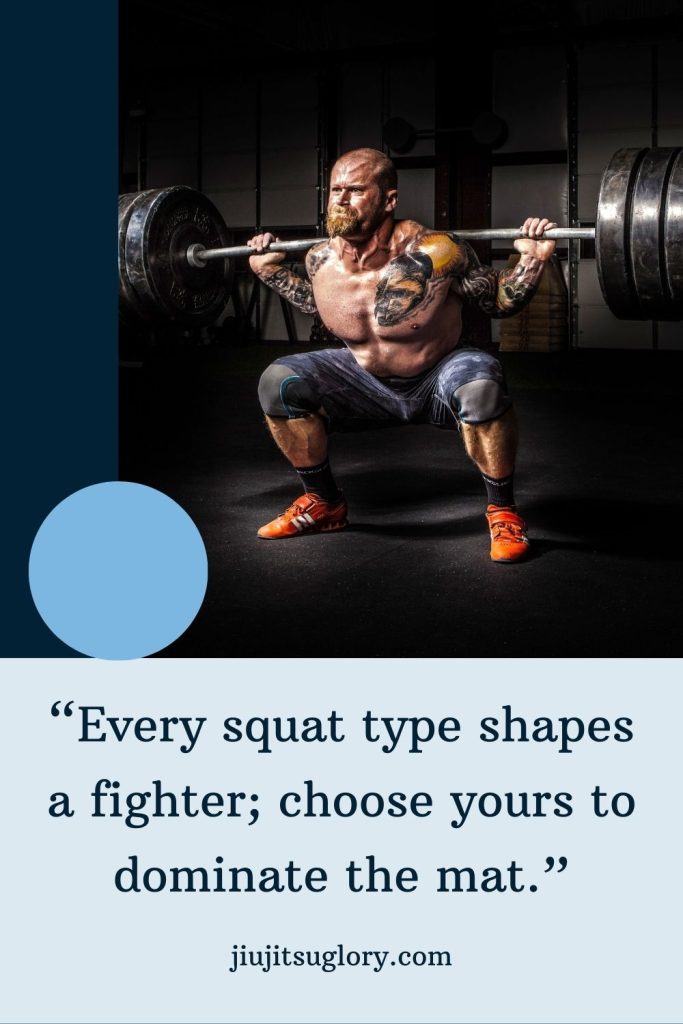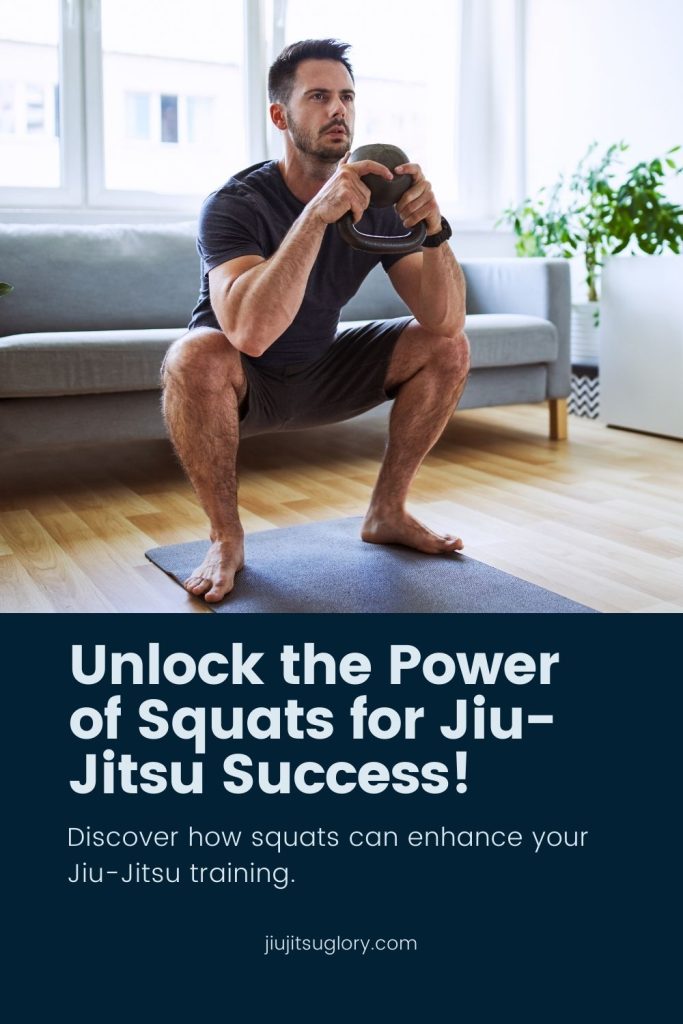Squats are a powerhouse exercise that every Jiu-Jitsu practitioner should include in their training.
Not only do they build strength and endurance, but they also improve your performance on the mat significantly.
This article will explore why squats are essential, the different squats you can do, and how to effectively incorporate them into your jiu-jitsu routine.
The Benefits of Squats for Jiu-Jitsu

Squats offer a multitude of benefits for grapplers, such as:
- Core Stability: Squats are fantastic for strengthening your core, which includes your abs and back muscles. A strong core helps you maintain balance and control when grappling on the ground, making it easier to hold your position and defend against opponents.
- Leg Strength: Powerful legs are vital in BJJ for executing effective sweeps and maintaining strong guard positions. Squats enhance your leg muscles, giving you the strength to push against opponents and move quickly during matches.
- Mobility and Flexibility: Regular squatting increases your hips’ range of motion and flexibility, crucial for performing high-guard maneuvers and staying mobile on the mat. Flexible hips also help you avoid injuries and move more freely during fights.
Types of Squats for Jiu-Jitsu

Bodyweight Squats
These are the starting point for anyone new to strength training or Brazilian Jiu-Jitsu.
Bodyweight squats help you focus on your form and technique without the added challenge of weights.
They build endurance and teach you the fundamentals of proper squatting, which is crucial before progressing to more challenging variations.
Back Squats
Back squats are a great option when you’re ready to add weights.
By placing a barbell across your shoulders and upper back, you engage not just your legs but also your core, back, and shoulders.
This exercise develops overall strength and power, which is vital for explosive movements and effective throws in BJJ.
Front Squats
Unlike back squats, front squats involve holding the weight at your chest.
This position mimics the front-loaded situations you often encounter in BJJ, such as carrying an opponent’s weight.
Front squats are excellent for strengthening the upper body and core, improving your ability to maintain posture and control during a match.
Overhead Squats
This advanced squat variation requires holding a weight above your head while squatting.
Overhead squats challenge your balance, coordination, and shoulder and core stability.
These are essential for jiu-jitsu as they improve one’s ability to manage and stabilize one’s body under dynamic conditions, enhancing performance during complex maneuvers.
Single-Leg Squats
Also known as pistol squats, this exercise focuses on one leg at a time, promoting balance and unilateral strength.
Since jiu-jitsu often involves asymmetric positions and movements, single-leg strength can correct imbalances and increase your ability to control and manipulate your opponent’s body weight with one leg.
Integrating Squats into Jiu-Jitsu Training

- Frequency and Timing: Mix squats into your training two to three times a week to get the best results. This frequency ensures you build strength without interfering with your regular BJJ practice.
- Combining Squats with JIu-Jitsu Drills: You can do squats before practicing specific BJJ movements. This method helps your body learn to apply new strength directly to your martial arts skills.
- Recovery and Safety: Always give your body time to rest and recover between squat sessions, especially when training hard in other areas. Avoid injury by warming up properly and not overloading weights too quickly.
Common Mistakes and How to Avoid Them

- Improper Form: Keep your chest and back straight, ensure your knees don’t go past your toes, and align your knees with your feet to avoid joint stress.
- Overloading Too Quickly: Increase weights gradually and listen to your body to prevent injuries and ensure proper form.
- Neglecting Warm-up and Cool-down: Start with dynamic stretches to prepare your muscles and end with static stretches to aid recovery.
- Ignoring Core Engagement: Engage your core before descending into a squat to protect your spine and improve stability.
- Forgetting to Track Progress: Maintain a training log to record weights, repetitions, and how exercises feel, helping you make effective adjustments over time.
See also: Effective Recovery from Jiu-Jitsu Knee Injuries – Best Practices!
Conclusion

Incorporating various squat exercises into your Brazilian Jiu-Jitsu training can significantly boost your performance on the mat.
Squats have comprehensive benefits, from enhancing core stability and leg strength to improving flexibility and overall physical endurance.
These exercises prepare your body to handle the rigorous demands of Brazilian jiu-jitsu, making you a stronger, more agile, and resilient fighter.


